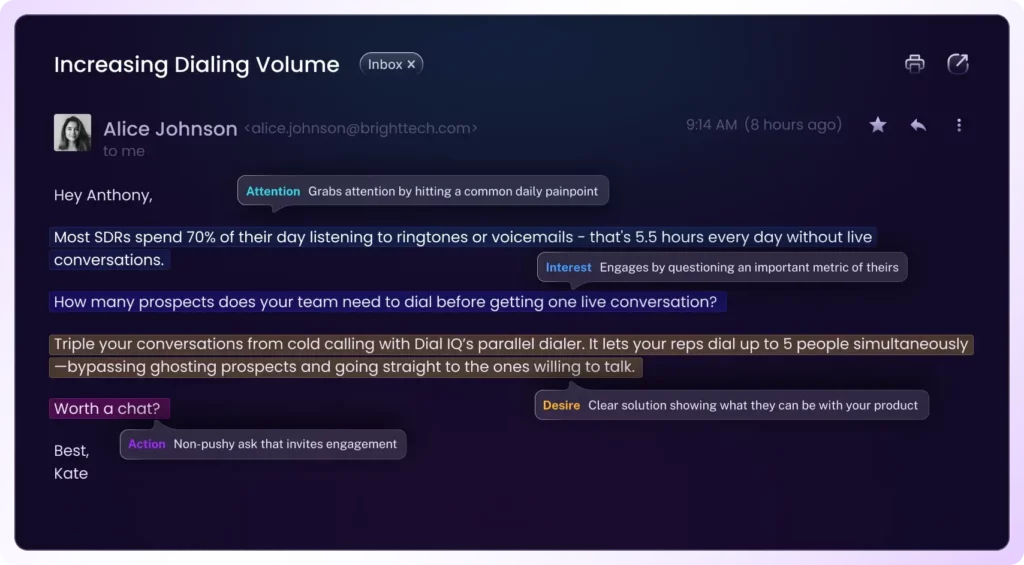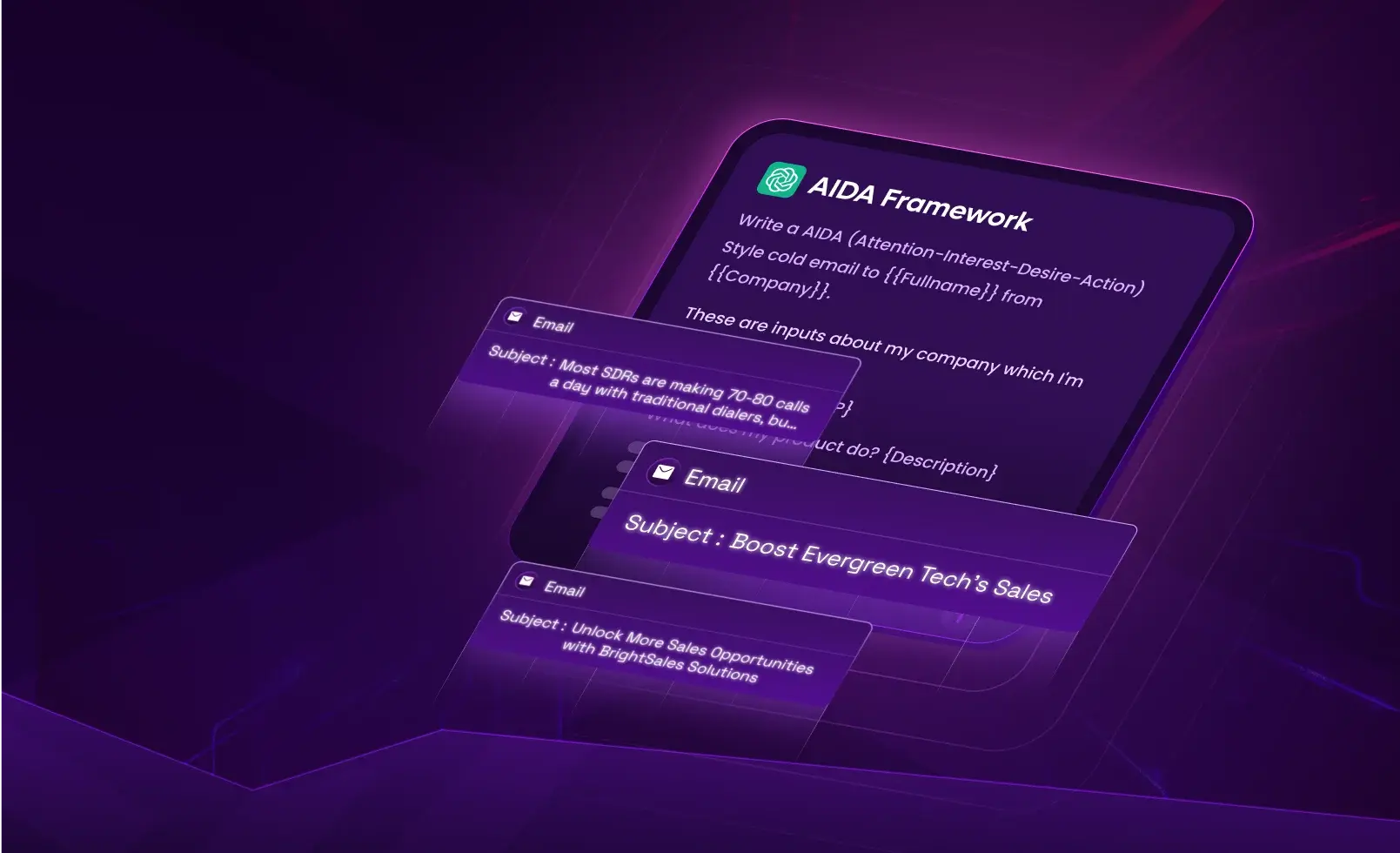Here's the truth about cold emails: Most sales reps still rely on the "spray and pray" approach, sending generic pitches that talk endlessly about their product features. But here's what they're missing: the psychology of how people make decisions.
Enter the AIDA framework—Attention, Interest, Desire, Action. This time-tested approach has been turning cold prospects into warm conversations since the early days of advertising.
Think of AIDA as a journey where you guide your prospect from initial curiosity to taking action, all while keeping their needs at the center of the story.
But here's the catch: Writing emails that move smoothly through these stages isn't easy.
Most sales reps struggle to craft messages that grab attention without being gimmicky, build interest without being pushy, and create desire without overselling.
This is where AI steps in.
Tools like ChatGPT can help sales reps create perfectly structured cold emails that follow the AIDA framework effortlessly.
In this blog, we'll explore the AIDA framework, provide a ready-to-use ChatGPT prompt for creating cold emails, and share an example email generated using the framework.
What Makes AIDA Work?
The power of AIDA lies in its psychological progression. Rather than jumping straight to the pitch, it guides prospects through a natural decision-making process that builds both emotional and rational engagement.
1. Attention: The Art of the Opening Hook
The first component focuses on stopping the scroll. This isn't about clickbait—it's about making your prospect think, "This is relevant to me." The key is crafting an opening that speaks directly to their situation or challenges.
2. Interest: Building the Connection
The interest phase deepens the engagement by expanding on the prospect's specific situation. Here, you demonstrate your understanding of their industry, role, or challenges, making them lean in to learn more.
3. Desire: Creating the "I Need This" Moment
Having captured their attention and interest, you now showcase your solution's value. This section focuses on specific outcomes and benefits, always tied back to their needs and challenges.
4. Action: The Clear Next Step
The final component is a simple, low-pressure call to action that feels like a natural next step based on the value you've demonstrated.

💡 ChatGPT Prompt: AIDA FRAMEWORK
Write an AIDA (Attention-Interest-Desire-Action) Style cold email to {{Fullname}} from {{Company}}.
These are inputs about my company which I'm trying to sell:
Ideal Customer: {ICP}
What does my product do? {Description}
The value we provide for the user: {Value Proposition}
What pain points do we solve? {Painpoints}
Competitor Advantage: {Competitor Advantage}
How we have helped people: {Case Study}
This is the input about the prospect: {Prospect_Research}
Write the subject in the following format:
Keep it simple, stating the main topic of the email. Avoid being overly creative or fancy. Limit it to 3-4 words max.
Write the email in the following format:
Attention: Start with a compelling statement or question that grabs the prospect's attention, tailored to their situation using {Painpoints} and {Prospect_Research}.
Interest: Address a key challenge they face, diving deeper into why it's a major hurdle for companies like {{Company}}. Support this with {ICP} insights or competitor weaknesses.
Desire: Highlight benefits by introducing {Description}, showcasing {Value Proposition}, and including relevant {Case Study} elements.
Action: End with a CTA - Either "Worth a chat?" or "Worth exploring?"
Guidelines:
Keep the email under 80 words.
Use a friendly, direct tone.
Make sure to bring forth all the mentioned elements of formatting.
Avoid vague terms like "streamline," "optimize," "maximize," etc.
Be as specific as possible without making assumptions about the prospect.
Sample Output:

Conclusion
The AIDA framework and prompt provided are your blueprints for writing high-converting cold emails.
But the real challenge is scaling this for hundreds of prospects. Even with AI, executing this effectively at scale is a struggle.
That's why we built SDRx—an AI outbound agent that handles everything from in-depth prospect research to perfectly timed follow-ups, creating qualified pipeline without the manual grind.
By analyzing prospect behavior and leveraging 25 copywriting frameworks, SDRx generates highly personalized emails at scale, ensuring every outreach is relevant and impactful.
Want to use AI to create personalized, human-like emails for every prospect?
Book a demo of SDRx today.


